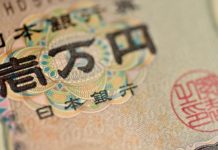Markets
Above-consensus CPI, driven by low 2023 base effects and far more important by (very) strong current price dynamics, sent shockwaves through the bond market yesterday. Ongoing economic resilience and a more than healthy labour market combined with sticky price pressures (January and February were NOT a blip) raise serious questions to the Fed’s ability to cut rates three times this year – or just lower them at all. The market implied probability after March inflation numbers yesterday for a June rate cut dropped to 20%. July is given a 50% chance only and even September is no longer fully priced in. Cumulative easing amounted to less than 2 rate cuts in 2024. US front end yields surged 23-24 bps. The long end joined by adding 12-18 bps in the 10y-30y bucket, supported by a tailing $39bn 10-y auction and unhindered by the FOMC minutes. Policymakers in the March policy meeting discussions “generally favored” slowing the balance sheet roll-off “fairly soon”. The idea was floated to halve the current monthly pace in USTs ($60bn) but stick with the $35bn cap on MBS. With the backing of risk aversion (stocks about 1% lower) and favourable interest rate differentials, there was no stopping the US dollar. DXY surged to a new YtD high of 105.24 – the highest level since mid-November. USD/JPY 152 long acted as a deterrent with markets fearing JPY losses beyond this level would prompt Japanese FX interventions. But the dollar crushed this resistance zone by closing at 153.24. New verbal warnings hit the wires this morning but without money on the table for now. EUR/USD posted the biggest one-day decline since March 2023, dropping more than a full big figure from 1.0857 to 1.0743. The technical charts look dire and pose a great challenge to Lagarde. The ECB meets today but the decision itself (status quo) won’t be surprising. The difficult part lies in the press conference afterwards. Weak (but gradually recovering) economic & credit (e.g. Tuesday’s BLS) indicators and ongoing disinflation back the case for a June rate cut. But because the data about Q1 wage negotiations aren’t available yet, Lagarde will probably just offer hints instead of outright committing to our base case. The key is what happens next. While the ECB in theory moves independently, the maneuvering room in practice remains limited when the Fed has its hands tied. Frankfurt can only lower rates so far before you’ll start seeing the consequences for the euro. A not hawkish enough Lagarde will undoubtedly trigger Bund outperformance and euro weakness against a resurgent US dollar. EUR/USD 1.0695 is less than half a big figure away. A break lower paves the way for a return to the 2023 low of 1.0448.
News & Views
The Bank of Canada kept its policy rate unchanged at 5% yesterday and continues its policy of quantitative tightening. In its new Monetary Policy Report, the BoC forecasts GDP growth of 1.5% in 2024, 2.2% in 2025 and 1.9% in 2026. The strengthening economy will gradually absorb excess supply through 2025 and into 2026. Since the January update, oil prices averaged about $5/b more than assumed. Overall financial conditions have eased. Canadian CPI inflation slowed (2.8% Y/Y) with easing in price pressures becoming more broad-based. Sticky shelter price inflation remains an area of concern though. The BoC expects CPI inflation to be close to 3% during the first half of this year, move below 2.5% in the second half, and reach the 2% inflation target in 2025. In coming months, the BoC will look for more evidence that the downward trend in headline and core CPI is sustained. Interestingly, the BoC raised its estimate of the nominal neutral rate from 2%-3% in last year’s assessment to 2.25%-3.25%. USD/CAD yesterday surged to a new YTD high (USD/CAD 1.37) as the loonie succumbed to the mighty USD. CAD did slightly outperform against the euro (EUR/CAD 1.47). The market implied probability of a policy rate cut at the next, June, meeting fell from around 75% to 60%.
Chinese inflation fell again in March (-1% M/M), pulling the Y/Y figure down to 0.1% from 0.7%. The February figure was driven/distorted by stronger demand over the Lunar New Year holiday. The setback was broad-based with services inflation at 0.8% Y/Y from 1.9% and consumer goods prices falling by 0.4% (from -0.1%). Food inflation declined by 2.7% Y/Y (from -0.9%). Core inflation slowed from 1.2% Y/Y to 0.6%. Headline CPI averaged zero in Q1 2024, up from -0.3% in Q4 2023 but insufficient to put deflationary concerns to bed.











